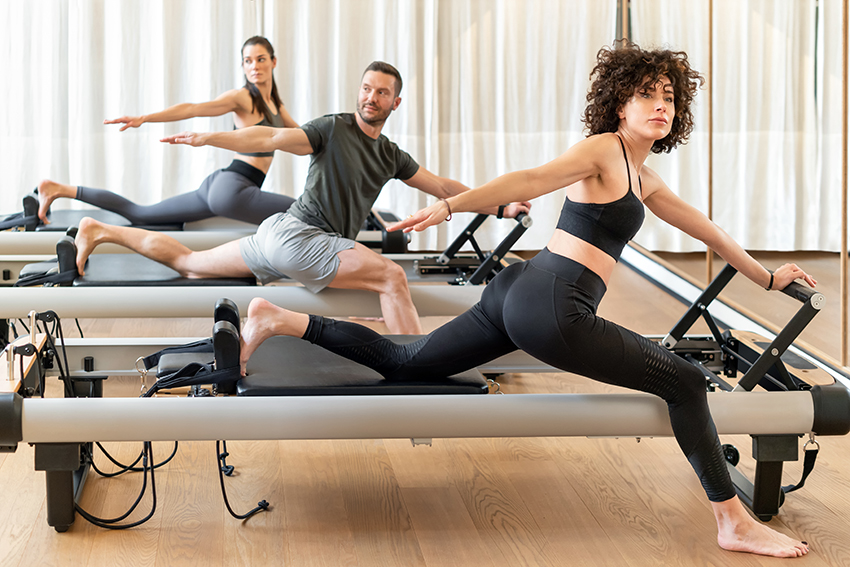
Reformer Pilates vs Traditional Pilates – What’s the Difference?
Are you looking for a fun and interesting exercise to tone your muscles? One of the best forms of exercise is Pilates because it gives you a full-body workout. But there are two forms of this exercise namely reformer Pilates Frankston health enthusiasts enjoy, and traditional Pilates.
If you’re not sure what form of Pilates is best for your body type and exercise preferences, then this article is for you. We’ve compared the two exercises so you can see the differences and what their benefits are. Keep reading to see how you can take your workout to the next level!
What is Reformer Pilates?

Reformer Pilates requires the use of a machine called a reformer. The reformer was originally designed by Joseph Pilates during World War I to help rehabilitate injured soldiers. It consists of a flat, narrow bed and a sliding carriage that has a series of springs and pulleys.
Each part of the reformer machine can be adjusted to increase or decrease the resistance and set it to different heights. This makes its application quite vast.
This machine adds a variety of workouts to your routine and provides resistance training. Furthermore, reformer Pilates is considered a low-impact exercise, but you still get a full-body workout.
Advantages of Reformer Pilates
Many people prefer to use the reformer machine because it provides a wide variety of benefits for the body. Here is what you can expect if you decide to do reformer Pilates:
- Improves your posture.
- Strengthens and tones muscles.
- You can customise the settings of the machine to your needs.
- The machine helps you recover from joint issues and injuries.
- Allows you to perform exercises while lying flat on your back.
- The machine assists with proper exercise form.
- Allows you to perform a wide range of exercises.
What is Traditional Pilates?

Traditional Pilates doesn’t require the use of any machines to perform exercises. All you need is an exercise mat which provides cushioning when working out. This type of Pilates relies on your body’s weight for resistance so you can strengthen and tone your muscles.
However, this form of Pilates can be more challenging and may require the help of a trainer to ensure that you have good form throughout your workout.
Advantages of Traditional Pilates
The reason why some people choose to do traditional Pilates is because they don’t have a reformer yet. Using a mat is an ideal way to carry on with your exercises while you save up for a reformer machine or find a gym with these types of machines. Here are a few benefits you can experience when performing traditional Pilates:
- It can be performed anywhere as long as you have a soft mat.
- Ideal for learning the foundational movements of Pilates.
- Improves your posture and coordination.
- Traditional Pilates is ideal for beginners or advanced practitioners.
Differences Between Reformer and Traditional Pilates

Reformer Pilates is performed on an elevated machine while traditional Pilates is done on the ground using a soft mat. Additionally, traditional Pilates utilises the body for resistance training but with a reformer, you use adjustable springs and straps attached to a machine.
The reformer machine provides more support for the body, so it’s designed for people who need safe exercises to strengthen their joints and muscles. Doing Pilates on a mat may not be as exciting or challenging but it can be beneficial for those who are new to these types of exercises.
Similarities Between Reformer and Traditional Pilates
Both traditional and reformer Pilates give you the same benefits such as improved posture, increased strength, and flexibility. They also require the same type of exercise like ‘one leg circle’ or ‘shoulder bridge’.
What’s more, both reformer and traditional Pilates provide challenges to help strengthen your core. You can perform a variety of exercises on a reformer or mat to burn calories. Pilates improves your mobility whether you’re using a mat or a reformer.
Which Form of Pilates Should You Choose?

Even though reformer and traditional Pilates have a variety of differences they also provide similar benefits. So, choosing one over the other comes down to personal preferences. However, if you’re a beginner you may want to learn the fundamentals of Pilate movements using a mat first before getting a reformer.
You can build a solid foundation in Pilates using a mat by performing key movements. Once you have the fundamentals of Pilates you can then begin to use a reformer to further challenge yourself. On the other hand, if you’re pregnant, post-partum, or suffer from chronic joint pain, then it’s recommended that you use a reformer.
The reformer is an elevated machine so it will be easier for you to get up when you’re done with your exercises. You can also change your level of resistance on a reformer so you can increase your strength further.
Final Thoughts
Now that you know more about traditional and reformer Pilates you can try different types of exercises to build muscle tone and strength. Using both types of Pilates, you can recover from an injury or challenge yourself to become stronger and more resilient.
